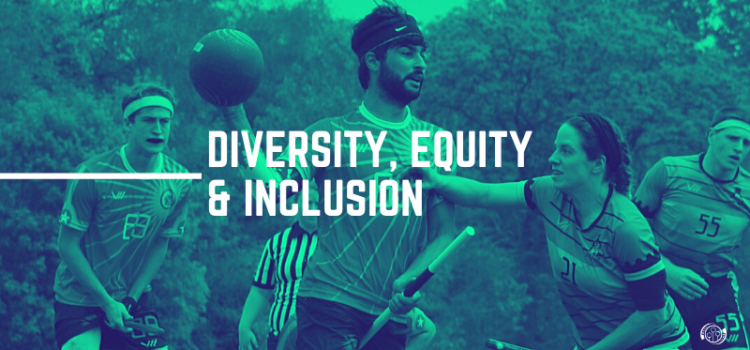MLQ Creative Designer Jane Arnett is bisexual and proud. A former member of MLQ’s Rochester Whiteout and a current member of Quidditch Canada’s Calgary Lightning, Arnett attributes much of their positive experience to their teammates.
“The first time I admitted to myself and came out as bisexual was after joining quidditch.”
Bisexuality is defined as romantic or sexual attraction to more than one gender. It may be used as an umbrella term to include labels like pangender, queer, omnisexual, or used as an individual label, depending on the person it applies to.
One MLQ volunteer and former player, Jane Arnett, told us about their experience with bisexuality, and how it has overlapped with their quidditch experiences.
“Playing and being quidditch (or queerditch as I call it with my friends), introduced me to many other athletes and volunteers who are comfortable in their bi identity. Outside of quidditch, there is a lot of bi erasure from both the LGBTQ+ community and cishet people, but within this community I’ve found a lot more acceptance and allies than I initially expected,” they said. “I love that within this community, there’s awareness and acknowledgement of bisexual people.”
The first observance of Bi Visibility Day was in 1990. It was tied to the founding of America’s oldest national bisexuality organization, BiNet USA. Originally known as the North American Multicultural Bisexual Network (NAMBN), the organization had its first meeting at the first National Bisexual Conference in America. More than 450 people attended from 20 states and 5 countries, and the mayor of San Francisco sent a proclamation “commending the bisexual rights community for its leadership in the cause of social justice.” The mayor also declared June 23, 1990, Bisexual Pride Day.
From there, the occasion evolved. Celebrate Bisxuality Day was first observed in 1999, at the International Lesbian and Gay Association Conference in Johannesburg, South Africa. The day was the brainchild of bisexual rights activists Wendy Curry of Maine, Michael Page of Florida and Gigi Raven Wilbur of Texas. The three had the aim of bringing bisexual identities front and center for a day, and creating a space for people to celebrate their oft-overlooked bisexual identities.
“The bisexual community also has grown in strength but in many ways we are still invisible. I too have been conditioned by society to automatically label a couple walking hand in hand as either straight or gay, depending upon the perceived gender of each person,” Wilbur said.
Today, Celebrate Bisexuality Day (or Bi Day of Visibility) is an opportunity to center voices and experiences of anyone attracted to multiple genders, recognize hurdles that are unique to bisexual experiences, challenge bi erasure, help people find the bisexual community and hold space for bisexual people to love and be proud of who they are.
So why is Bi Day of Visibility important to Arnett and so many others?
“Bi Awareness Week really helps to remind me that even if you’re in a straight-passing relationship or a gay-passing relationship, that you’re still valid, and no matter what your relationship looks like, it doesn’t make you any less Bi,” Arnett. said
Check out these organizations to learn more about bisexuality and how to volunteer and be a better ally:

